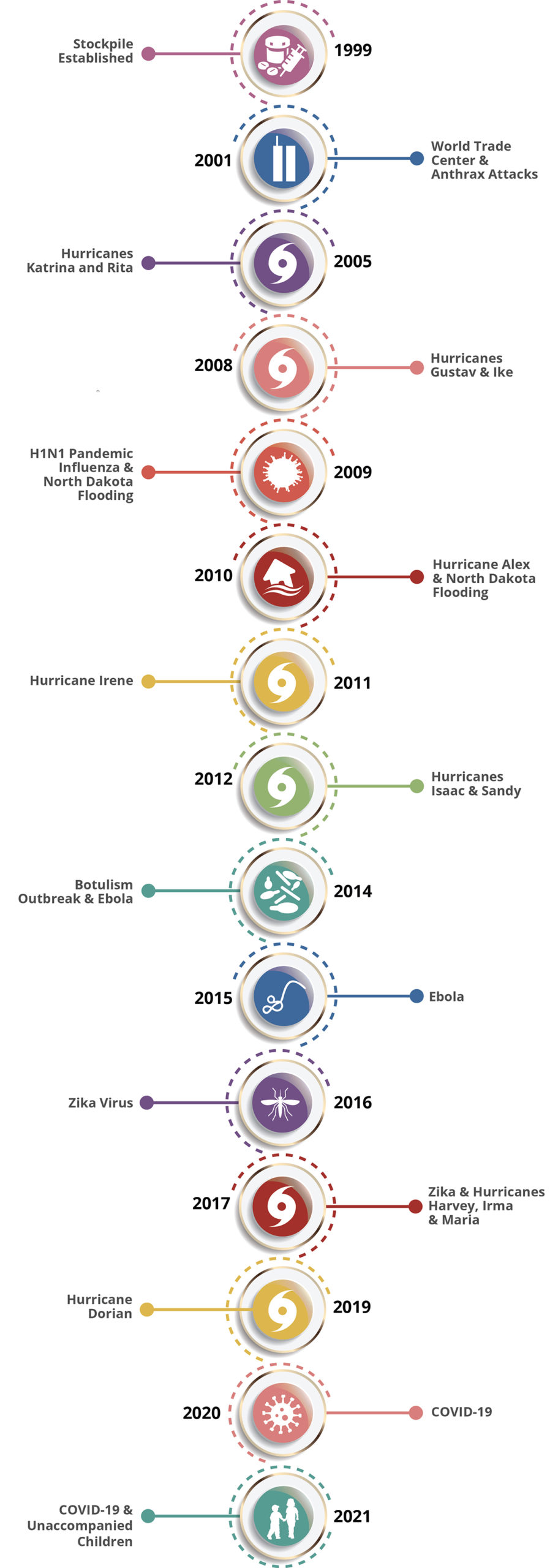
Strategic National Stockpile: CHEMPACK
- Posted by Mike Shertz MD/18D
- Categories Tactical CBRN
Researched and written by Mike Shertz, MD/18D, not AI
🕖 Reading Time, 3 minutes
The Strategic National Stockpile was created in 1999 as a source to store and distribute medical countermeasures in case of a national emergency. It was structured to have a 12-hour response time for the delivery of products. Because there was concern this would be too long in the event of a chemical weapons attack, the CHEMPACK was added in 2002, and contains nerve agent antidotes. 1,960 CHEMPACK containers have been prepositioned throughout the US. It is believed that 90% of the US could be reached by a CHEMPACK deployment within one hour. Two different CHEMPACKs are available. One for hospitals and another for EMS.
Each hospital CHEMPACK is designed to supply enough nerve agent antidote to treat 1,000 casualties. EMS versions have a 454-casualty supply.
Stockpiled nerve agent antidotes include both atropine and pralidoxime in vials for IV use. Atropine auto-injectors are also stockpiled, as is midazolam in vials to treat nerve agent-induced seizures. As of 2015, some CHEMPACKs still contained Mark 1 atropine/pralidoxime auto-injectors, as well as diazepam auto-injectors and vials.
Through the Shelf Life Extension Program many expired items have remained in the CHEMPACKs if they have been shown to still be efficacious.1,2
Nithiodote (sodium nitrite and sodium thiosulphate) is available for the treatment of cyanide casualties. Silverlon wound dressings are stockpiled in preparation for vesicant injuries, i.e. sulfur mustard.
EMS CHEMPACKs are oriented to first responders and disproportionally contain auto-injectors (85%), whereas the hospital version is 85% multi-dose vials. 3
“The CHEMPACK Project was initially developed to provide effective response to large scale nerve agent release resulting in many casualties. In March of 2012 the CDC released updated CHEMPACK Project guidance that allowed for the opening of a container to save life regardless of the number of casualties. In doing so the CDC recognized a nerve agent or organophosphate release may not result in a mass casualty event”.1
Several other medical countermeasures in the Strategic National Stockpile are vaccinations and treatments for a variety of potential biologic agent threats, including Anthrax, Botulism, and Smallpox. Medical countermeasures for radiation exposure are available.
NOTES:
1 New York State Deparment of Health Chempack Guidelines
2Strategic National Stockpile guidelines
3 Chemical Hazards Emergency Medical Management
For more information: Strategic National Stockpile
Dr. Mike Shertz is the Owner and Lead Instructor at Crisis Medicine. Dr. Shertz is a dual-boarded Emergency Medicine and EMS physician, having spent over 30 years gaining the experience and insight to create and provide his comprehensive, science-informed, training to better prepare everyday citizens, law enforcement, EMS, and the military to manage casualties and wounded in high-risk environments. Drawing on his prior experience as an Army Special Forces medic (18D), two decades as an armed, embedded tactical medic on a regional SWAT team, and as a Fire Service and EMS medical director.
Using a combination of current and historical events, Dr. Shertz’s lectures include relevant, illustrative photos, as well as hands-on demonstrations to demystify the how, why, when to use each emergency medical procedure you need to become a Force Multiplier for Good.





